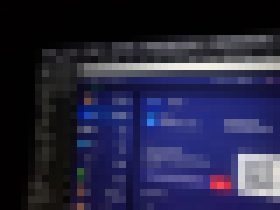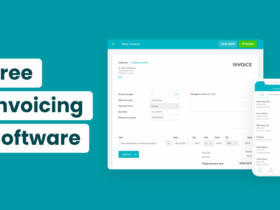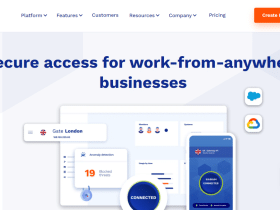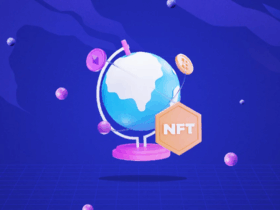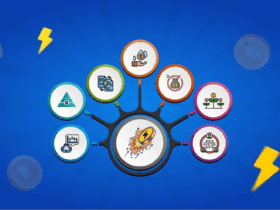What Is Crypto Airdrop?
A crypto airdrop is a marketing approach that cryptocurrency projects frequently employ in order to distribute free tokens or coins to a large number of cryptocurrency wallet holders. The word “airdrop” refers to the concept of tokens being “dropped” into the wallets of eligible receivers, usually as a promotional or community-building endeavor.
Airdrops are a means of fairly dispersing tokens among a project’s early supporters, investors, or users. It can contribute to more broad and decentralized token ownership. Airdrops are a method of distributing tokens fairly to a project’s early supporters, investors, or users. It has the potential to lead to more widespread and decentralized token ownership.
Some programs employ airdrops to increase user involvement or participation in specific activities. To be eligible for an airdrop, users may be asked to follow social media profiles, suggest friends, or perform particular tasks.
What Is Songbird Airdrop?
Songbird Airdrop is the Canary network for Flare, it will have two distinct phases. Prior to the launch of Flare, Songbird will be instrumental in the continued testing of the Flare Time Series Oracle, the StateConnector and F-Asset systems and the network architecture. Post Flare launch, Songbird is intended to be a long term network for testing governance led changes to Flare, such as the incorporation of new F-Assets, changes to the FTSO, F-Asset systems or any other network change.
Songbird Airdrop will be airdropping free SGB to XRP holders based on the same snapshot as of Flare which was taken at the first validated XRP ledger index number with a timestamp greater than or equal to 00:00 GMT on 12th December 2020. Eligible users will get free SGB at a ratio of 0.1511 SGB : 1 XRP.
Basic Songbird Airdrop Points
| Basic | Details |
|---|---|
| Token Name | Songbird Airdrop |
| Platform | Own chain |
| Support | 24/7 |
| Total value | N/A |
| KYC | KYC Is Not Requirement |
| Whitepaper | Click Here To View |
| Max. Participants | Unlimited |
| Collect Airdrop | Click Here To Collect Free Airdrop |
How To Claim Songbird Airdrop Step-by-Step Guide:
- Songbird will be airdropping free SGB to FLR airdrop participants.
- The snapshot remains the same as of Flare which was taken at the first validated XRP ledger index number with a timestamp greater than or equal to 00:00 GMT on 12th December 2020.
- If you’re eligible for the FLR airdrop through an exchange, then you’re also eligible for the SGB airdrop but you may need to contact the exchange to get a confirmation. Binance, Kraken, Huobi, Crypto.com, Wazirx, ProBit, etc have already announced support for the airdrop.
- If you’re eligible for the FLR airdrop through a self custody wallet and have completed the claim process before June 12th, 2021, then you will also get free SGB.
- Supported wallets are Ledger, Metamask, Exodus, Bifrost and D’cent.
- Ledger users will be able to claim SGB through a Songbird app for Ledger which is pending approval from the Ledger Team. Ledger users will also have the option to import the seed phrase/private keys from the ETH address they’ve used as the message key into another Songbird supported wallets like Metamask, Bifrost or D’cent.
- Visit XRPSCAN, input your non-custodial XRP address and then click on “Flare” in the “Assets” section to see your SGB balance.
- The rewards will be distributed around the launch of Songbird at a ratio of 0.1511 SGB : 1 XRP.
- For more information regarding Songbird, see this page and for information regarding the Flare FLR airdrop , see this article.
How To Check Songbird Airdrop Is Real Or Fake
Checking the legitimacy of a crypto airdrop can be a bit tricky, as scammers often use sophisticated techniques to create fraudulent airdrop campaigns that appear to be legitimate. Here are some steps you can take to verify the authenticity of a crypto airdrop:
- Check Official Sources: Examine the project’s official website and social media platforms. In this situation, you should visit the official Flare Network website and follow them on Twitter. Legitimate projects usually make announcements and provide updates via their official channels.
- Keep an eye out for Announcements: Examine official announcements and blog entries on the airdrop. These announcements should include information regarding the airdrop, such as the start and finish dates, eligibility requirements, and distribution process.
- Examine the Whitepaper: Examine the project’s whitepaper, if one is available. It should include information on the airdrop and how it fits into the wider ecosystem of the project.
- Scams to Avoid: Be wary of unsolicited messages or emails purporting to come from the project team. Scammers frequently attempt to imitate legitimate enterprises in order to steal funds or personal information. Avoid clicking on dodgy links or entering personal information.
- Join the following official communities: Join the project’s official Telegram, Discord, or other community channels. Participating in the community might assist you in staying informed and verifying the veracity of announcements.
- In summary, it’s important to conduct thorough research, verify the source and instructions, look for feedback from other users, and trust your instincts when evaluating the legitimacy of a crypto airdrop. By taking these steps, you can minimize the risk of falling for a fraudulent airdrop and protect your assets and personal information.
What are the risks of participating in an airdrop?
Participating in an airdrop carries a number of hazards, which must be understood before engaging in one. Airdrops are a popular way to distribute bitcoins or tokens to a large number of people, sometimes for promotional or community-building goals.
There are several phishing techniques and bogus airdrops aiming to steal your personal information or cryptocurrency assets. Scammers may set up phony airdrop campaigns in order to trick unwary participants into handing over their private keys or other sensitive information.
Songbird Airdrop Pros Or Cons
Pros of participating in an airdrop:
- Continuous Testing: Songbird provides an excellent environment for continuous testing of essential Flare network components such as the Flare Time Series Oracle (FTSO), StateConnector, and F-Asset systems. This constant testing assists in identifying and resolving any faults before they influence the main network, hence improving Flare’s overall stability and security.
- Architecture Testing: Songbird acts as a platform for testing the network’s architecture, allowing developers to experiment with various setups and optimizations. This iterative technique may result in a more robust and efficient Flare network architecture.
- Risk Mitigation: Songbird helps decrease the chance of unforeseen bugs or vulnerabilities affecting Flare by serving as a testbed for various components and updates. Early detection and repair of problems can help to avoid disruptions and protect user assets on the main network.
Cons of participating in an airdrop:
- Complexity: Keeping two different networks (Songbird and Flare) for testing and production can complicate the development and governance procedures. To properly maintain both networks, resources and attention are required.
- Resource Allocation: Songbird resources, such as development efforts and network maintenance, may take focus away from the main Flare network. This could potentially hinder the development and deployment of Flare.
- User Confusion: Users unfamiliar with the Flare ecosystem may find it difficult to navigate two distinct networks with diverse aims and regulations. When engaging with any network, this could lead to misunderstandings and blunders.
Songbird Airdrop Final Verdicts
Finally, Songbird serves as Flare’s Canary network, playing an important role in two distinct phases. Songbird acts as an important testing ground prior to the official launch of Flare, allowing for continued experimentation and improvement of critical components such as the Flare Time Series Oracle, StateConnector, F-Asset systems, and the overall network architecture. This early phase is critical to ensuring that Flare is a stable and dependable platform that is ready for prime time.


